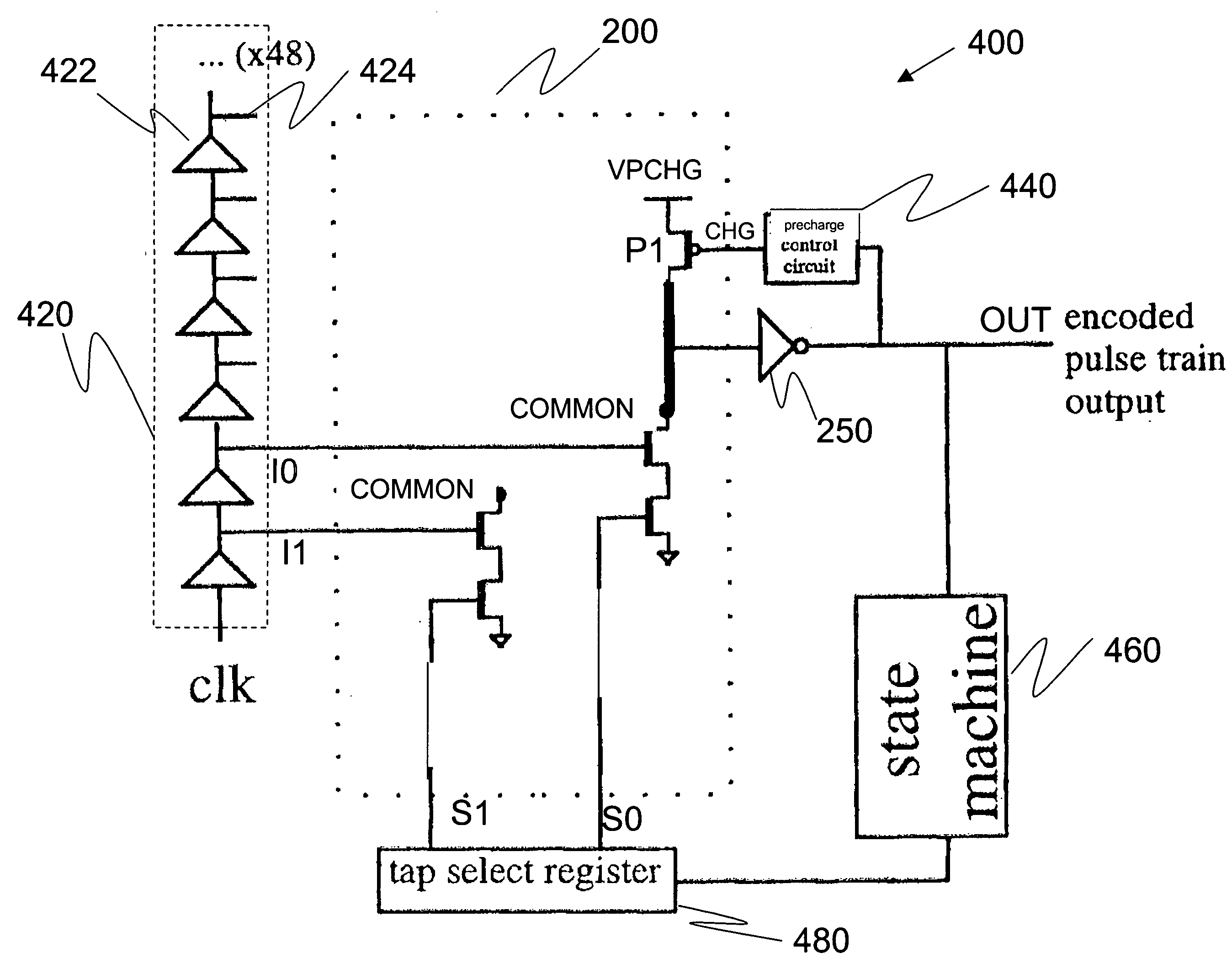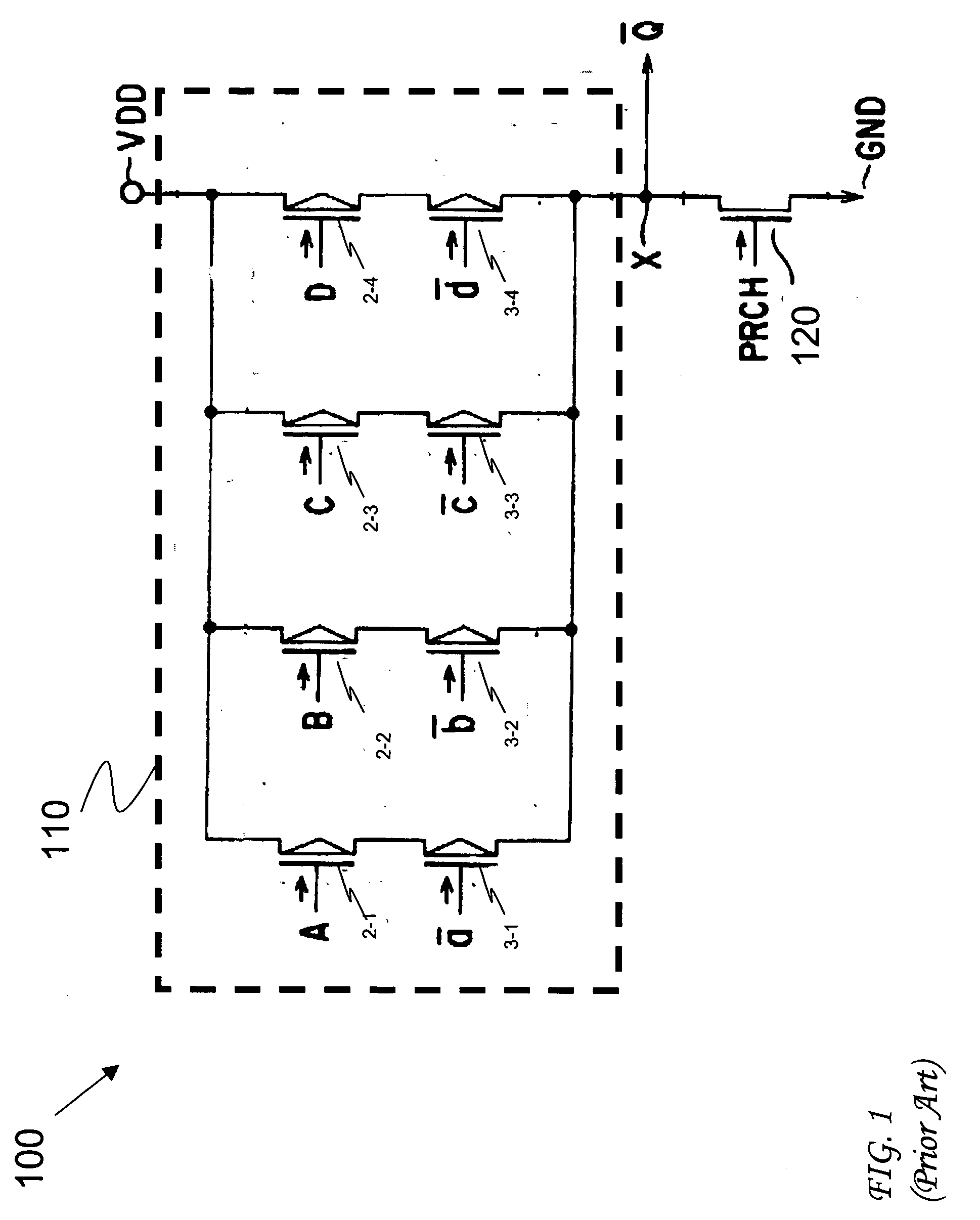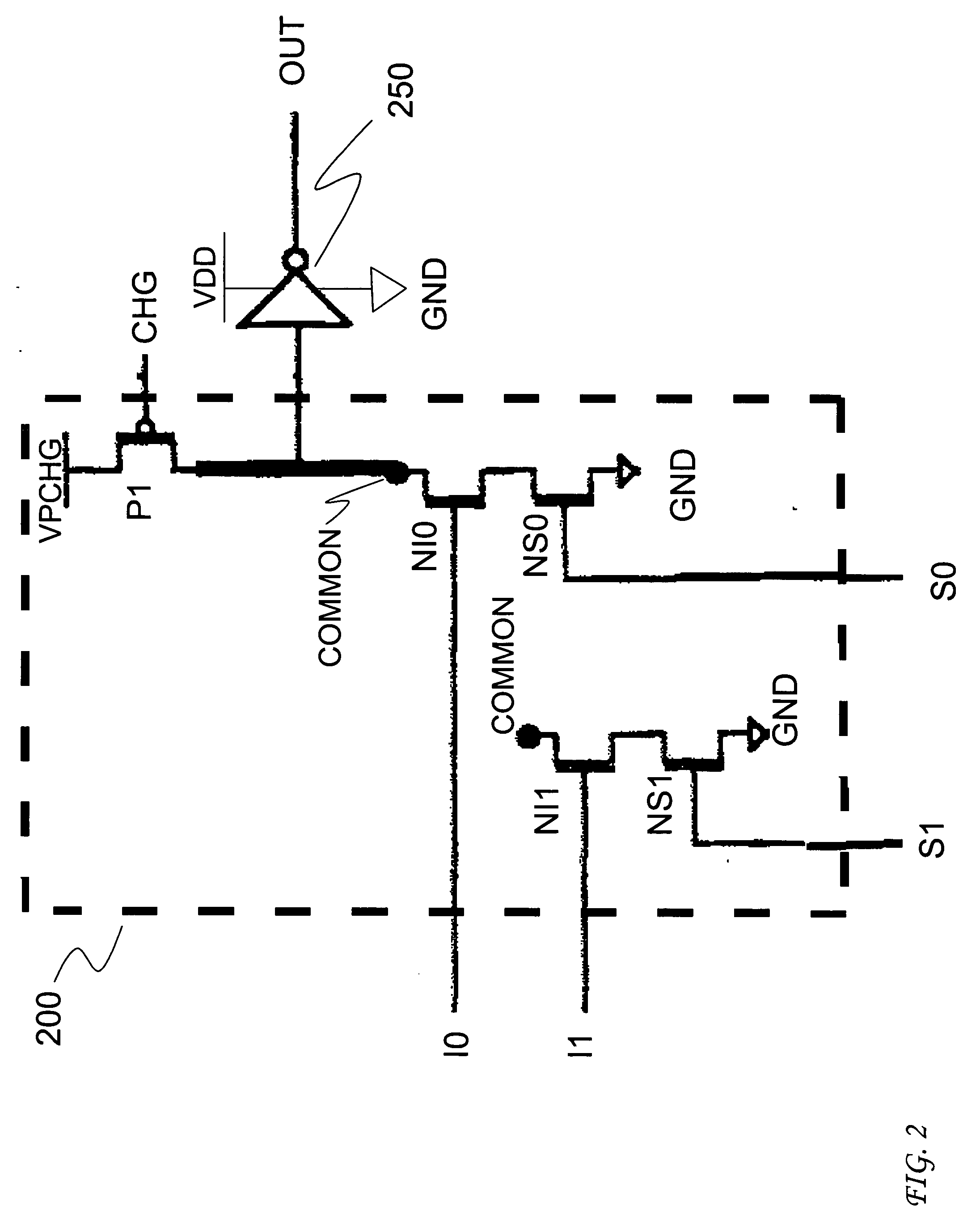Reduced voltage pre-charge multiplexer
a voltage pre-charge and multiplexer technology, applied in the field of reducing the voltage pre-charge multiplexer, can solve the problems of select-to-output delay, different type of delay, low speed of prior art multiplexers, etc., and achieve low input to output delay, reduce path delay through a large multiplexer, and reduce the delay effect of input to outpu
- Summary
- Abstract
- Description
- Claims
- Application Information
AI Technical Summary
Benefits of technology
Problems solved by technology
Method used
Image
Examples
Embodiment Construction
[0013] With reference to FIG. 2, an exemplary embodiment of a low pre-charge voltage multiplexer 200 is comprised of a PMOS pre-charge transistor P1, a first NMOS input transistor NI0, a first NMOS select transistor NS0, a second NMOS input transistor NS1, and a second NMOS select transistor NS1. An input signal I0 is coupled to the gate terminal of the first NMOS input transistor NI0. The drain terminal of the first input transistor NI0 is coupled to a common circuit node COMMON. The source terminal of the first NMOS input transistor NI0 is coupled to the drain terminal of the first NMOS select transistor NS0. A select signal S0 is coupled to the gate terminal of the first NMOS select transistor NS0. The source terminal of the first NMOS select transistor NS0 is coupled to a system ground potential GND. An input signal I1 is coupled to the gate terminal of the second NMOS input transistor NI1. The drain terminal of the second input transistor NI1 is coupled to the common circuit no...
PUM
 Login to View More
Login to View More Abstract
Description
Claims
Application Information
 Login to View More
Login to View More - R&D
- Intellectual Property
- Life Sciences
- Materials
- Tech Scout
- Unparalleled Data Quality
- Higher Quality Content
- 60% Fewer Hallucinations
Browse by: Latest US Patents, China's latest patents, Technical Efficacy Thesaurus, Application Domain, Technology Topic, Popular Technical Reports.
© 2025 PatSnap. All rights reserved.Legal|Privacy policy|Modern Slavery Act Transparency Statement|Sitemap|About US| Contact US: help@patsnap.com



